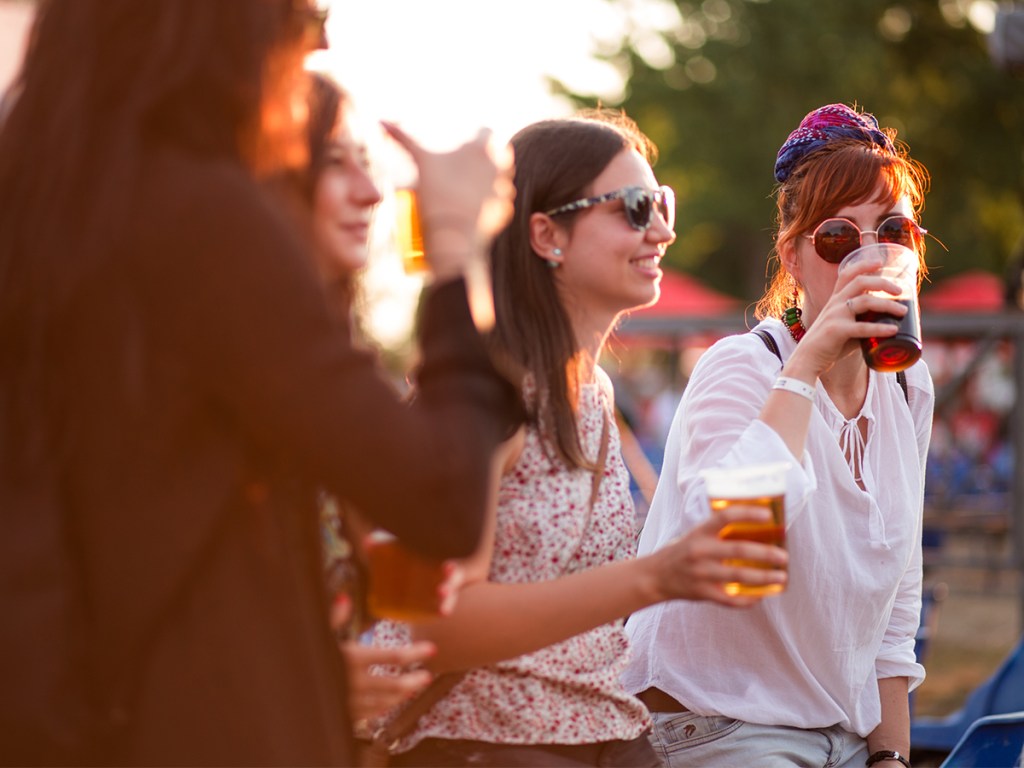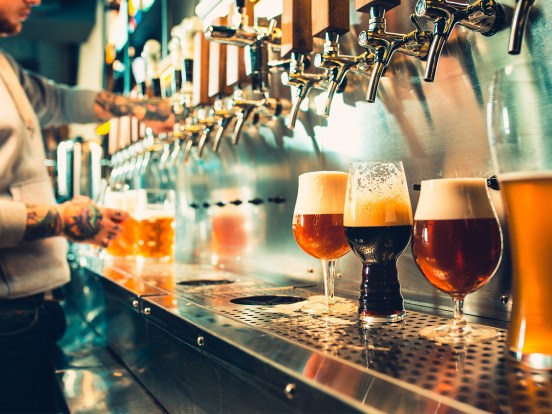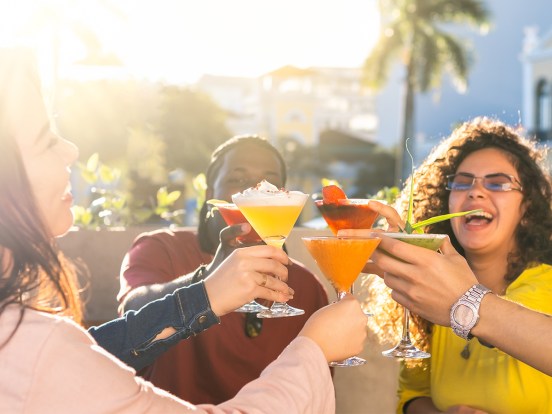While no-alcohol is poised to spearhead overall no/low growth in the coming years, a number of innovations across wine, beer and spirits will help to boost future consumption of low-alcohol products as well, according to new data from IWSR.
Low-alcohol volumes across the world’s top 10 no/low markets are predicted to grow at a CAGR of +3% between 2023 and 2027. Much of the category’s growth is expected to come from some of the largest low-alcohol markets, including Germany, the US, France and the UK.
Wine remains the strongest performer in the low-alcohol marketplace, with IWSR forecasts showing a 2023-27 volume CAGR of +12% for the category, ahead of RTDs (+9%) and beer/cider (+2%), while spirits are expected to decline (-2%).
But all categories are the source of much innovation at the moment, from the exploration of ‘mid-strength’ wines to extensions of established brands and the launch of low-alcohol products that aim to leverage changes in the regulatory environment.
Continued education
For consumers who want to moderate their alcohol intake, low-alcohol propositions can sometimes be confusing.
“Consumers don’t necessarily know that an alcoholic spirit brand normally sits at 30-40% ABV, so they don’t always know what a 20% ABV spirit means for a gin brand, or how a 20% ABV spirit might relate to a 5% ABV wine or a 1% ABV beer,” says Susie Goldspink, Head of No/Low-Alcohol Insights, IWSR.
Furthermore, it is often unclear to consumers how many low-alcohol beverages they can consume and still be within the legal drink-drive limit.
As such, brands may need to continue educating consumers on the low-alcohol proposition.
Established brands
As in no-alcohol, line extensions of established full-strength brands into the low-alcohol space are a way of recruiting consumers to try products with reduced levels of alcohol.
Established wine brands are increasingly exploring the potential of ‘mid-strength’ variants, as are some marquee beer brands.
For instance, Asahi launched Asahi Super Dry Dry Crystal in the Japanese market in 2023 – a product with a reduced alcohol level of 3.5% ABV, marking the first time the company has changed the Super Dry recipe since its creation.
New wine technology
No- and low-alcohol wine has traditionally suffered from poor consumer perceptions of quality and flavour, but new advances in winemaking technology are trying to address this issue.
The Advancement of Australian Lifestyle Wines project was launched in 2023 – an initiative uniting brand owners and research institutes and backed by a AU$3m research grant from the federal government.
It aims to position Australia as the largest global producer of no/low wines.
“Governments and producers are recognising the untapped opportunity in reduced-ABV wine, and are investing in new no/low technology to mitigate the long-term decline in the full-strength wine category,” says Goldspink.
“Gaining repeat purchase of low-alcohol wines remains a challenge, but investment in technology will improve quality.”
Mid-strength and ‘better for you’ wines
Established wine producers are increasingly prioritising lower-alcohol product launches, expanding their most popular brand franchises with a number of mid-strength expressions that typically have about half the ABV of their core ranges.
This is particularly apparent in Australia, where recent low-alcohol spin-offs of major brands include Elephant in the Room (6.5% ABV), Squealing Pig Mid Pig (5-6.5% ABV), Pepperjack Mid (7%) and McGuigan Black Mid – which sits outside IWSR low-alcohol wine definitions at 9.8% ABV, but targets the same consumers (it has also been launched in the UK at 7% ABV).
“Outside Moscato, low-alcohol wine has traditionally struggled to cut through, but a wealth of mid-strength NPD means it should attract more attention in future,” says Goldspink.
“Mid-strength is a well-known concept in the Australian beer category and has been adopted by wine brands to help shoppers better understand and navigate low-alcohol wine.”
In Japan, there is a growing trend towards lower ABVs across many categories – in beer and RTDs, but also in still, sparkling and rice wines.
Recent innovations include AFAP sparkling sake from Sakura Town at 7% ABV (instead of a typical 10-16% ABV); and Japan Soda’s Nihonsakari Japan Soda sake, also at 7%.
In the US, there is growing interest in the ‘better for you’ wine segment, as a result of consumer awareness of health and wellness, especially among the LDA Gen Z cohort.
“Consumers are increasingly drawn to brands with fewer calories, organic credentials, reduced carbs, lower alcohol content and, in many cases, zero residual sugar,” adds Goldspink.
Examples of products targeting this segment include Kim Crawford Illuminate, Kendall-Jackson Low Calorie Chardonnay, Sunny with a Chance of Flowers, Mind & Body, Matua Lighter, and [yellow tail] Pure Bright.
Regulatory shifts
In August 2023, alcohol duty changes were introduced in the UK, ushering in a lower tax rate on beer below 3.5% ABV and higher duty on most still wine – and this is already driving NPD and the reformulation of existing products.
Examples in beer include the new Rosa Blanca 3.4% ABV variant from Damm, and Carlsberg reducing the ABV of its flagship lager brand to 3.4%.
Wine launches include the McGuigan Mid-range of 7%, lower-calorie wines from Australian Vintage, with a Shiraz, Sauvignon Blanc and Rosé; and the Sevenly wine range which arrived in the UK in October 2023 – a partnership between actor Sarah Jessica Parker and New Zealand’s Invivo Wines.
“Low-alcohol could be on the brink of better times in the UK, with ‘mid-strength’ beer and wine gaining in prominence, aided by 2023 duty changes that favour products with lower ABVs,” says Patrick Fisher, Senior Market Analyst, IWSR.
“This is only likely to spur more NPD and product reformulation in this area.”
Spirits making inroads
Low-alcohol spirits are ceding market share to low-alcohol wine in particular, especially in the US, where IWSR forecasts predict that low-alcohol wine volumes will grow at a CAGR of +14% between 2023 and 2027, while low-alcohol spirits are expected to decline at a CAGR of -9% over the same timescale.
Nonetheless, brand owners are still targeting consumers who are looking for lower alcohol levels, through products such as Decem, which is distilled with fragrant botanicals for a full flavoured 10% gin alternative, and Quarter, which offers 12% gin and tequila alternatives as well as a ready-to-serve lighter Margarita and Negroni.
“Such an approach generates interest in lower-proof products, even though it is outside IWSR’s definition of a low-alcohol spirit,” says Goldspink.
“Low-alcohol spirits are overshadowed by low-alcohol wine, but brands are making inroads with products reflecting changing consumer behaviour, especially a preference for lighter drinking experiences.”
How to catch up with The Shout NZ…
Online, updated daily with its own unique content and breaking news.
Our weekly newsletter – free to your inbox! Subscribe here.
We are also on Facebook and Instagram!





